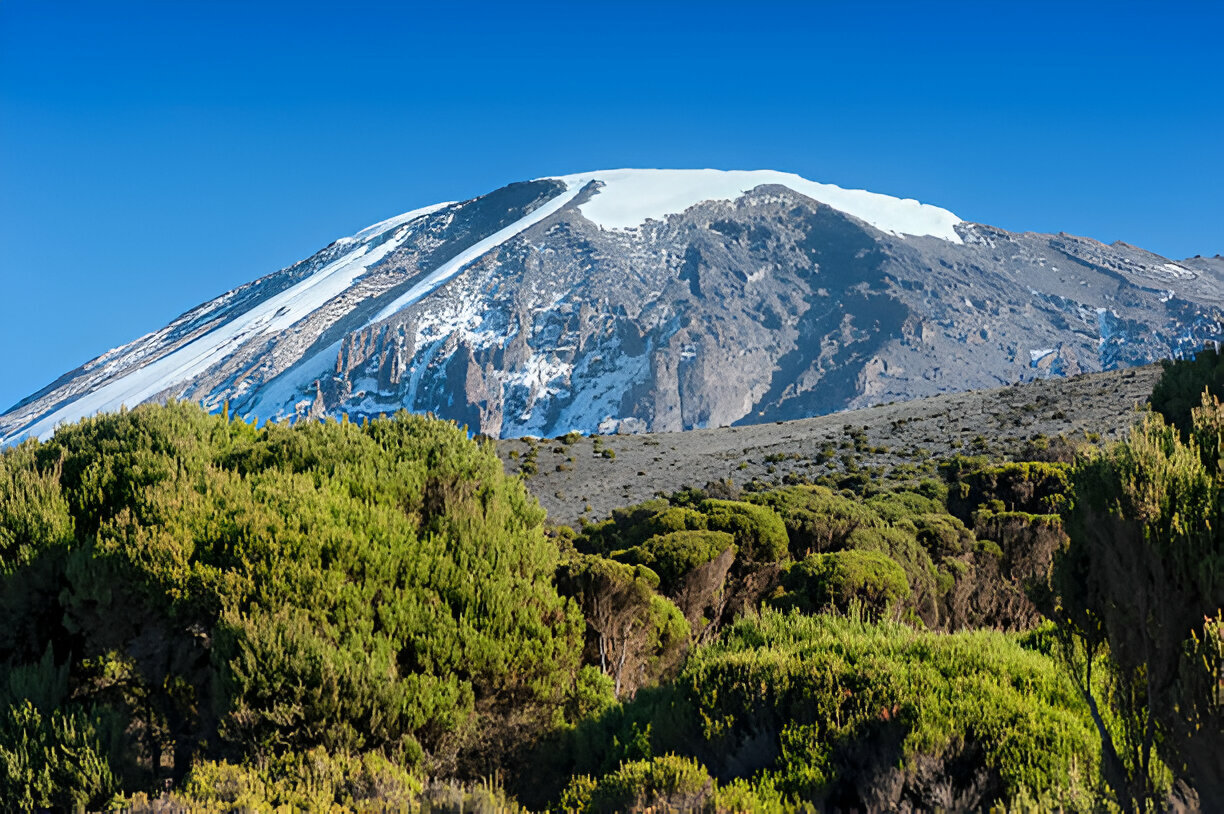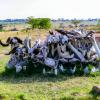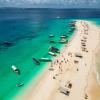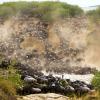Mount Kilimanjaro Routes
Mount Kilimanjaro, at 5,895 meters (19,341 feet), is the highest peak in Africa. Located in Tanzania, it attracts climbers from around the world. The mountain offers various routes, showcasing dramatic changes in landscape as climbers ascend. Reaching the summit, Uhuru Peak, is a significant challenge due to the high altitude, but it remains an achievable goal for those who prepare.
Kilimanjaro is renowned for its accessibility compared to other high mountains, offering a truly rewarding experience for adventurous travelers.
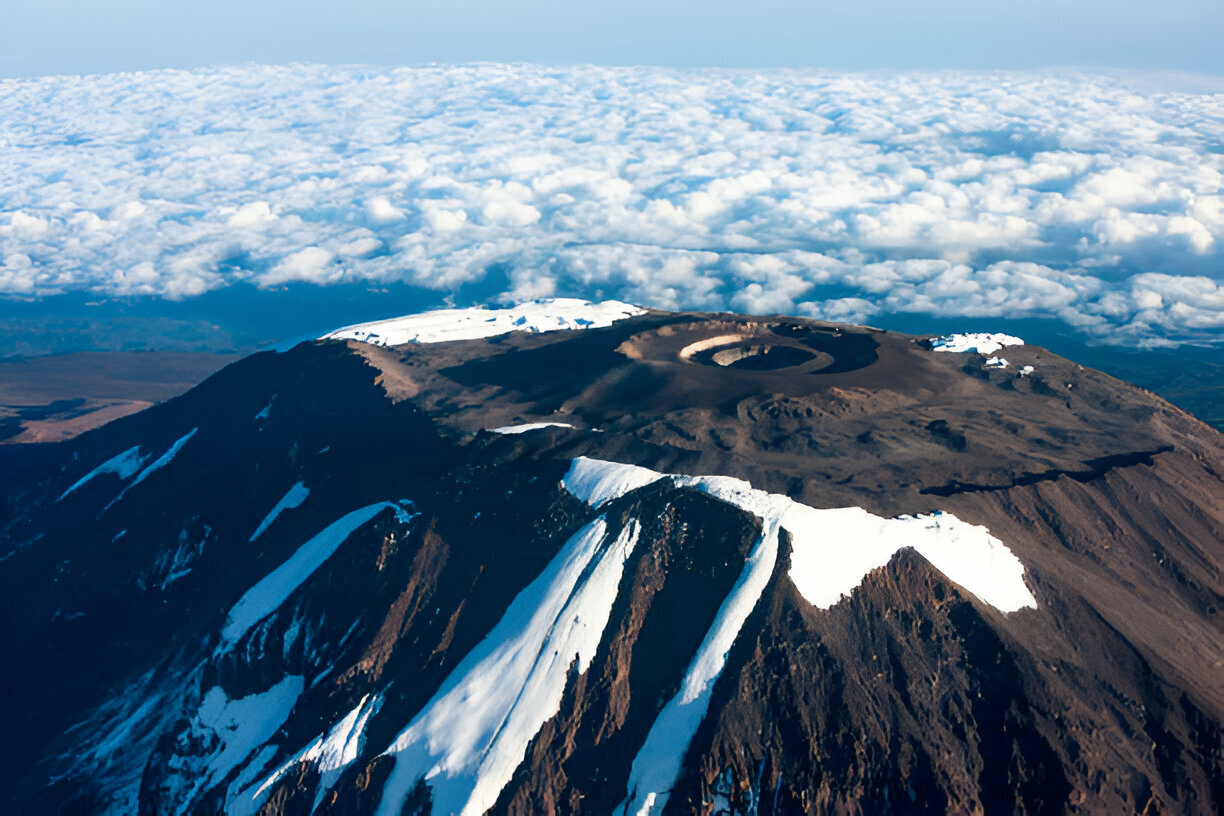
Routes on Mt Kilimanjaro
Mount Kilimanjaro offers several trekking routes, each varying in difficulty, scenery, and duration.
1. Machame Route
The Machame Route is one of the most popular and scenic routes. It is considered moderately challenging due to its steep sections and altitude gain. The route offers a good balance between scenery and difficulty.
- Duration: 6-7 days
- Description
Day 1: Starts at Machame Gate (1,800 meters/5,906 feet), hiking through dense rainforests.
Day 2-4: The route progresses through various terrains, including the moorland and alpine desert, with overnight stays at different camps like Shira Camp and Barranco Camp.
Summit day: Climbers usually leave around midnight to reach Uhuru Peak (5,895 meters) by sunrise.
- Why It's Great: This is one of the most popular and scenic routes. It provides a beautiful mix of rainforests and alpine deserts as you climb. It is slightly more challenging but offers great views.
2. Marangu Route
The Marangu Route is the oldest and one of the most straightforward routes. It is the only route with hut accommodations, making it a more comfortable option, though it is often considered less scenic.
- Duration: 5-6 days
- Description:
Day 1: Starting from Marangu Gate (1,860 meters/6,100 feet), hikers ascend through rainforest.
Day 2-4: The route climbs gradually with overnight stays at huts at Mandara Hut, Horombo Hut, and Kibo Hut.
Summit day: Climbers depart early in the morning from Kibo Hut (4,700 meters) to reach Uhuru Peak.
- Why It's Great: Marangu is the oldest route and the only one with hut accommodations, making it the most comfortable. It’s considered a less strenuous route due to its gradual ascent, but this can also affect acclimatization.
3. Lemosho Route
The Lemosho Route is known for its scenic beauty and is considered one of the best for acclimatization due to its longer trek. This route starts in the western part of the mountain and takes climbers through less crowded areas.
- Duration: 7-8 days
- Description:
Day 1: Starts at Lemosho Gate (2,100 meters), passing through the rainforest and moorlands.
Day 2-4: Ascend through the Shira Plateau and continue through different camps such as Shira Camp and Barranco Camp.
Summit day: The final push begins at midnight from Barafu Camp (4,600 meters) to reach Uhuru Peak.
- Why It's Great: Lemosho is a scenic route with excellent acclimatization opportunities. It has less traffic, giving a more private experience. It also offers stunning views and a diverse range of landscapes.
4. Rongai Route
The Rongai Route is the only route that approaches Kilimanjaro from the north. It is considered less crowded and is a great option for those seeking a quieter experience. It is slightly easier than the Machame Route, although still challenging due to altitude gain.
- Duration: 6-7 days
- Description:
Day 1: Begins at Rongai Gate (1,950 meters/b6,398 feet), heading through forested areas.
Day 2-4: Climbers ascend to camps like Kikelewa Camp, Mawenzi Tarn Camp, and Kibo Hut.
Summit day: The final climb begins from Kibo Hut to Uhuru Peak.
- Why It's Great: Rongai is known for being quieter and less crowded. It’s a good option for climbers who want to experience a more remote climb with different landscapes, including the northern dry side of the mountain.
5. Northern Circuit
The Northern Circuit is the newest route on Mount Kilimanjaro, offering a long trek that passes through a variety of habitats. It is one of the longest and most scenic routes, with a focus on acclimatization.
- Duration: 8-9 days
- Description:
Day 1: Starts at the Lemosho Gate (2,100 meters / 6,890 feet), following a similar route as the Lemosho Route but veering to the northern side of the mountain.
Day 2-6: The trek progresses through areas like the Shira Plateau, Barranco Camp, and the Karanga Valley.
Summit day: The summit ascent begins from Barafu Camp to Uhuru Peak.
-
Why It's Great: It is the longest route, providing the best acclimatization period. The views are incredible, and you’ll trek through diverse habitats.
Here’s a table summarizing the routes, starting points, key campsites along the way, and ending points for climbing Mount Kilimanjaro:
| Route | Starting Point | Key campsites | Ending Point |
| Machame Route | Machame Gate (1,800 m) | Machame Camp (3,000 m), Shira Camp (3,840 m), Barranco Camp (3,960 m), Karanga Camp (4,035 m), Barafu Camp (4,600 m) | Uhuru Peak (5,895 m) |
| Marangu Route | Marangu Gate (1,860 m) | Mandara Hut (2,700 m), Horombo Hut (3,720 m), Kibo Hut (4,700 m) | Uhuru Peak (5,895 m) |
| Rongai Route | Rongai Gate (1,950 m) | Kikelewa Camp (3,600 m), Mawenzi Tarn Camp (4,300 m), Kibo Hut (4,700 m) | Uhuru Peak (5,895 m) |
| Northern Circuit | Lemosho Gate (2,100 m) | Shira 1 Camp (3,500 m), Shira 2 Camp (3,900 m), Barranco Camp (3,960 m), Karanga Camp (4,035 m), Barafu Camp (4,600 m) | Uhuru Peak (5,895 m) |
| Lemosho Route | Lemosho Gate (2,100 m) | Shira Camp (3,840 m), Barranco Camp (3,960 m), Karanga Camp (4,035 m), Barafu Camp (4,600 m) | Uhuru Peak (5,895 m) |
Each route up Mount Kilimanjaro offers a unique adventure, with distinct starting points, key campsites, and the ultimate goal to Uhuru Peak.

